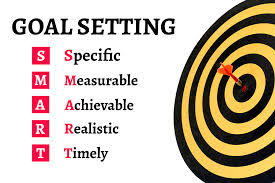Setting goals
is the best way to meet your objectives. Without goals, you are just flying by
the seat of your pants with no direction or idea if you are on the right path.
Sticking with
anything new is difficult. Too often, people set goals that are vague and
unrealistic. Not only does this lead to frustration, but it also decreases the
likelihood of actually achieving the goal.
Rather than
capitulating to our shortcomings, try using Lean skills instead. Transforming
an ambiguous goals into a SMART goal can help.
So, make sure
your goals are:
Specific, simple, and clear. For example, use
one action verb. Remember, the greater the specificity, the greater the
measurability.
Measurable. Goals and targets should include
numeric or descriptive measures that define quantity, quality, cost, etc. Goals
should be written to answer, “How will you or others know when the goal has
been successfully met?” The more precise you are about what you want to get
done, the easier it will be to see what and how much was accomplished.
Achievable, realistic, and attainable. You should
feel challenged by the goal (a 10-mile run in 6 months), but not that it is out
of reach (a full marathon, tomorrow!).
Relevant. Consider the following questions: is
this the right time for this goal? Is this goal worthwhile to you?
Time-bound. Deadlines make things happen. For new
year’s resolutions, this part is simple—it’s by the end of 2020! If you have a
big goal that will take years to achieve, what is a 1-year milestone to aim for
by the end of 2020? If you need more deadlines, what are milestones to aim for
in each month or each quarter of this year?
Having goals
like this can make you more accountable and the act of writing them this way
has value, too. Thinking through what specifically you hope to change, to what
degree, and why it’s relevant to you helps you set a goal that is
meaningful—and those are the goals you stick with!



No comments:
Post a Comment